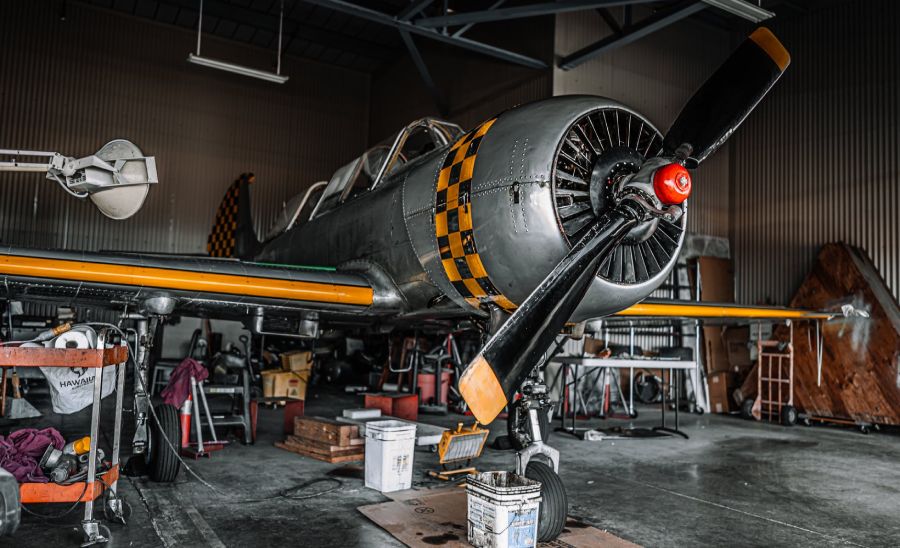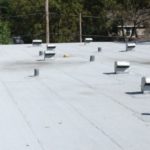Airplane maintenance is an essential part of owning any plane, regardless of whether you have one helicopter or a whole armada. Everything airplane requires to be overhauled generally as indicated by the particulars that were given by their manufacturers.
That is exactly why we thought of these eight airplane maintenance tips to protect you and keep you safe.
Individual maker necessities will vary; however, every airplane generally needs a yearly assessment to check the plane’s condition. Presently is the best and ideal time to have that yearly inspection.
Notwithstanding, maintenance and service checks are essential during the time, including before each flight. Considering that, the following tips for airplane maintenance this winter season.
What You Can Do and What You Can’t Do
The federal aviation guidelines are quite sure as far as what airplane owners may and may not do regarding support of their specialty. In particular, confirmed pilots are permitted to do preventive upkeep on the airplane they possess or work on as long as it isn’t utilized for specific things, including for a:
- Domestic or for commercial operations
- Commuter aircraft
- Foreign air carrier
This implies somebody who owns or works a private airplane can do “preventive support” without waiting to be directed by an Airframe or Powerplant (A&P) technician.
However, the guidelines do likewise state that maintenance tasks are viewed as preventive, and what’s more, they request consistency with support logging. So, you have to fill in the logbook, so investigations, etc., are recorded at whatever point you do maintenance undertakings.
Here are several maintenance ideas to help you keep your aircraft in top shape and keep safe.
1. Keep a Regular Inspection Schedule
Every year, all airplanes must have at least one inspection, per FAA rules. If the plane carries individuals other than a crew, you need extra reviews every 100 hours of flight. These checks guarantee the well-being and airworthiness of the airplane.
Progressive reviews are a possibility for an airplane with heavy use. They decrease the time between regular inspections, yet there are more checks consistently.
For example, a corporate stream may have inspections after every 25 hours of utilization. This timetable requires exceptional endorsement that can’t be transferred.
Particular segments may require diverse inspection plans. For example, transponders and altimeters must be checked every 24 months. Emergency locator transmitters should be checked every 12 months; however, these may not be tried during the necessary yearly assessment.
Every so often, purchasers may demand a review before buying a plane. A wide range of examinations ought to be viewed when scheduling maintenance.
2. Be Aware of your Aircraft
The ideal approach to decide whether something isn’t right with your airplane is to utilize your senses. You’re acquainted with the standard of your airplane, which implies you’ll have the option to tell when something feels off.
If you feel vibrations during a ride that should be smooth or smell fuel when there shouldn’t be, call a specialist or an expert. Never accept that something faulty is the standard.
3. Structural Maintenance
The structure of an airplane is inclined to harm through age and regular use. Shockingly, up to 40 percent of auxiliary harm happens from ” friendly foreign object damage,” which is brought about by support or slopes.
Checking for and fixing this kind of injury, notwithstanding that brought about by age and weakness, is an aspect of a basic maintenance program.
4. Be Ready for Common items that Break
Oil filters, spark plugs, oil, and lights should never be something you have to order. Usual disappointment and wear things should be on the rack to get the airplane back in service without trusting that a section will get delivered.
The greater your fleet, and the more normalized it is, the more things you may pick or have the option to keep up nearby for handy solutions. More outstanding operators consistently have available extra magnetos, starters, alternators, chambers, or even engines.
This takes some capital cost, yet it implies your benefits to continue generating revenue.
5. Vacuum
Vacuum the inside of your plane or helicopter normally and wipe down all surfaces. Look for any oil or grease; this could mean something is releasing, and that extra activity (and likely some expert assistance) is required.
6. Check Tires
Check the condition of your tires just as the tire pressure. It is presumably consistent that generally, takeoff and landing are the two most dangerous things of flying; if your tires are not exactly great, mishaps can occur.
Changing airplane tires is a lawful preventative maintenance task that pilots and airplane proprietors can do themselves. Yet, you will require the correct instruments in your workshop building and ensure you know precisely what to do.
7. The Heater Inspection on Twins
Many twin-motor airplanes have mandated heater inspections that should be finished at intervals. Often these are finished every 100 hours so that they might be remembered for 100-hour investigations; however, they don’t should be.
8. Component Maintenance
Components require standard checking and maintenance through reviews to prevent failure. Essential age-related wear is not the most well-known reason for the loss of parts.
It is arbitrary, with 90% of conventional parts failing gradually after some time or by some coincidence. To guarantee the greatest life span for components, pick one of three demonstrated preventive maintenance strategies.
Components time is the least financially savvy. This strategy requires replacing a part once it’s reached its production line decided life expectancy. Functional inspections check a specific activity of a part to confirm they stay operational before replacing them.
Functional verification is the most intensive alternative. This strategy checks all elements of a part, particularly ones that may not be seen during a flight.
A few stages of component maintenance must be followed. Regular oil and fix of parts that destroy is the essential step. Visual or operational inspections decide whether a disappointment has happened.
Utilitarian reviews search for indications of approaching failure. At this progression, the failure rate ought to be unsurprising. If not, the part requires restoration or substitution.



